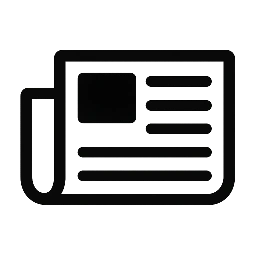A chimney liner plays a vital role in protecting your home and ensuring your fireplace or heating appliance functions safely and efficiently. It acts as a barrier that shields your chimney walls from heat, moisture, and corrosive gases. Whether you’re replacing a damaged liner or installing one for the first time, understanding the total investment is crucial. So, how much does a chimney liner cost?
Why Does a Chimney Liner Matter for Your Home?
Chimney liners are not just optional accessories; they are required by most building codes for safety and performance. A properly installed liner ensures that combustible materials do not ignite from the intense heat of exhaust gases. It also improves the draft and efficiency of wood stoves, fireplaces, and gas appliances. Most importantly, it prevents dangerous gases like carbon monoxide from leaking into your home.
What Are the Common Problems That Arise Without a Chimney Liner?
Without a functioning chimney liner, homeowners may face serious problems:
- Creosote buildup: In wood-burning systems, creosote accumulation increases fire risk.
- Corrosion: Moisture and acidic condensates can deteriorate the chimney’s masonry over time.
- Carbon monoxide leaks: A lack of proper sealing can allow toxic gases to enter living spaces.
- Poor efficiency: An unlined chimney can cause draft issues, reducing system performance.
These issues not only jeopardize safety but can lead to expensive repairs.
What Are the Key Features of a Quality Chimney Liner?
A durable and compliant chimney liner should include:
- UL Listed Material: Ensures the liner meets national safety standards.
- Stainless Steel or Aluminum Construction: Provides durability and corrosion resistance.
- Insulation Capability: Keeps gases hot for better draft and prevents condensation.
- Flexible or Rigid Configuration: Based on the structure of your chimney flue.
- Custom Sizing Options: Tailored to fit the dimensions of your existing chimney system.
What Are the Steps Involved in Chimney Liner Installation?
Professional chimney liner installation typically includes the following stages:
- Inspection and Measurement: Technicians assess the existing flue and determine the right liner dimensions.
- Removal of Old Components: Damaged or outdated liners are removed (if applicable).
- Liner Insertion: The new liner is inserted from the top of the chimney using specialized tools.
- Connection to Appliances: Ensures a sealed and code-compliant connection to furnaces, stoves, or fireplaces.
- Insulation and Sealing: Insulation is applied where required, and top caps are secured.
- Final Testing: The chimney is tested for proper draft and leak prevention.
What Role Does Chimney Liner Installation Play in Safety and Performance?
Professional chimney liner installation is essential for safe and reliable operation. Poorly installed liners can sag, collapse, or leak harmful gases. When performed correctly, a new liner enhances energy efficiency, minimizes health risks, and prolongs the life of your heating system. Moreover, it may be required to maintain compliance with your homeowner’s insurance policy and local regulations.
As the Chimney Safety Institute of America states:
“An appropriately sized and correctly installed chimney liner is the single most important safety improvement a homeowner can make in an aging chimney system.”
What Is the Cost Breakdown of a Chimney Liner Installation?
Chimney liner costs vary based on several factors, including material type, chimney length, and labor requirements. Below is an estimated cost range for different liner types:
| Type of Liner | Material Cost (per foot) | Installation Cost | Total Estimated Cost |
| Aluminum (for gas only) | $10 – $20 | $500 – $1,000 | $750 – $1,500 |
| Stainless Steel (flex) | $25 – $45 | $1,000 – $2,000 | $1,500 – $3,500 |
| Stainless Steel (rigid) | $30 – $60 | $1,500 – $2,500 | $2,000 – $4,500 |
| Cast-in-place liner | N/A | $2,000 – $5,000 | $2,500 – $7,500 |
| Clay tile liner (rare) | N/A | $3,000 – $7,000 | $3,500 – $8,000 |
Disclaimer: Costs may vary depending on location, chimney height, accessibility, and contractor rates.
Where Can You Learn More About Chimney and Pellet Stove Maintenance?
For deeper insights into chimney liner choices and related services, explore these resources:
- Chimney Liner Repair vs. Replacement: Which is Right for You?
- How to Tell If You Need a New Chimney Liner in Indianapolis
- What Are the Signs That My Chimney Liner Needs Repair or Replacement?
- Chimney Liner in Bel Air
- Chimney Liner Repair vs. Replacement: Which is Right for You?
Conclusion: Is a Chimney Liner Worth the Cost?
Investing in a chimney liner is not just about meeting code requirements—it’s about safeguarding your home, enhancing efficiency, and preventing long-term structural damage. Whether you choose stainless steel, aluminum, or cast-in-place options, understanding the full cost and benefits of chimney liner installation ensures peace of mind and a safer living environment. Be sure to work with licensed professionals and stay informed using expert guides like those linked above.
FAQs (Frequently Asked Questions)
Q: How long does a chimney liner last?
A high-quality stainless steel liner can last between 15–25 years with proper maintenance. Aluminum liners usually have a shorter lifespan of 10–15 years.
Q: Can I install a chimney liner myself?
While DIY kits are available, professional installation is highly recommended to ensure compliance with building codes and avoid costly mistakes.
Q: Does a chimney liner increase home value?
Yes. A properly lined and inspected chimney adds safety credentials and may increase resale appeal, especially in colder climates.
Q: Are liners required for pellet stoves and gas appliances?
Yes. Local codes typically require liners for safe venting of gas, oil, and pellet stove systems. Always consult a certified technician.
Q: What signs indicate I need a new chimney liner?
Cracked tiles, rust stains, poor draft, and smoke entering the room are common indicators. A chimney inspection will confirm the diagnosis.

